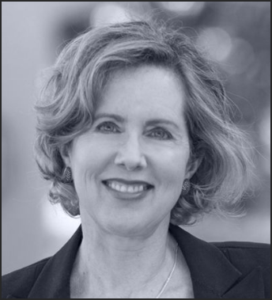##### sponsored content #####

by James A. Bacon
Statistical disparities between Whites, Blacks, Hispanics and Asians are at the root of the debate about race in America today. Other than a few powerless voices on the fringe of society, no one questions that racism is evil. With no one admitting to being racist, leftists have redefined racism. One strain of thought asserts that many White Americans are unconsciously biased, which affects their behavior in subtle yet malign ways. Another strand insists that America’s institutions are racist, which means that racism supposedly abounds even in the absence of discernible bias. The evidence for such propositions supposedly can be found in the wide differences between Whites and Blacks in income, education, health and other metrics of wellbeing. The existence of such disparities is proffered as proof of systemic bias and/or ineradicable flaws in our institutions.
The effect of this line of thinking is pernicious in so many ways. Perhaps the most devastating to American society and to allegedly marginalized minorities themselves is the corrosive impact it has on standards of merit and excellence.
Heather Mac Donald, a Manhattan Institute fellow, is perhaps best known for her takedown of racialist thinking on crime. But she has written extensively about the perils of Diversity, Equity & Inclusion as well. And in her most recent book, “When Race Trumps Merit: How the Pursuit of Equity Sacrifices Excellence, Destroys Beauty, and Threatens Lives,” she explores how a monomaniacal focus on statistical disparities corrupts science, the arts, and public policy.
In an event co-sponsored by The Jefferson Council, Mac Donald will address the University of Virginia community 7:00 p.m. Nov. 9 in Charlottesville on the topic, “DEI and the Death of Merit.” You can register here.
There is a large and growing body of work by conservatives, libertarians and old-school liberals that shows how “progressive” thinking has decoupled from reality when it comes to race. No one makes that case more compellingly than Mac Donald, who wields a rhetorical Ginsu knife to slice and dice woke ideology with devastating logic.
Medical schools, she writes in her most recent book, have been wholesale coopted by the woke agenda. The sad fact is that fewer African-Americans and Hispanics than Asians and Whites have mastered the scientific concepts necessary to thrive in medical school. Unwilling to admit that the appropriate remedy is to seek ways to improve minorities’ preparedness before they get to medical school, the racialists have concluded that med schools need more social-justice awareness and a relaxation of standards to admit a broader demographic. While racial minorities might like being treated by physicians who “look like them,” Mac Donald suggests, those patients will suffer disproportionately from misdiagnoses and inappropriate treatment at the hands of doctors whose clinical knowledge falls short.
That minorities suffer the most from lower standards is a major theme of Mac Donald’s thinking. Another horrendous example is the banning of successful policing practices that brought the 1980s crime wave under control. Unjustified police killings of unarmed African-American men are a minute fraction of the number of homicides committed by African-Americans against each other, including scores of women, children and innocent bystanders. But the racialists, with media complicity, have used a handful of unrepresentative cases such as George Floyd’s death to generate mass hysteria, hobble the police and introduce criminal-justice changes of dubious value. The foreseeable result has been a spike in homicides concentrated overwhelmingly among African-Americans.
Mac Donald’s criticisms of DEI and criminology in her latest book are familiar to those familiar with her past work. The big surprise in “When Race Trumps Merit” is her passionate critique of racialism in high culture — opera, symphonies, ballet, theater, and art museums. If you thought that elite universities were the most woke institutions in America today, you know little about its elite artistic institutions. In Mac Donald’s descriptions ranging from the Julliard School to New York’s Metropolitan Museum of Art, America’s biggest names in the arts are mind-numbingly woke. Yet, despite unparallelled solicitude toward minorities, they arguably engender more bitterness and resentment than any other set of institutions in American society.
Fixated on the fact that only 1.8% of orchestral players are Black — and oblivious to the fact that Black musicians might be more attracted to their own rich heritage of gospel, blues, jazz, hip-hop and rap — leaders of these elite institutions have sacrificed standards of classical excellence to make room for more minorities. Yet, like those who lament the paucity of minority med school students, these guilt-ridden White elites do almost nothing to increase the participation of those minorities in classical art forms while they are young.
Upon reading “When Race Trumps Merit,” one is left with the impression that America’s academic and cultural elites are afflicted by a near-psychotic break with reality. The book does not paint an encouraging picture of America’s future. If there is anything heartening in what Mac Donald has to say, it’s that America’s critics are hopelessly deluded. Reality has a way of asserting itself in the end.

Leave a Reply
You must be logged in to post a comment.